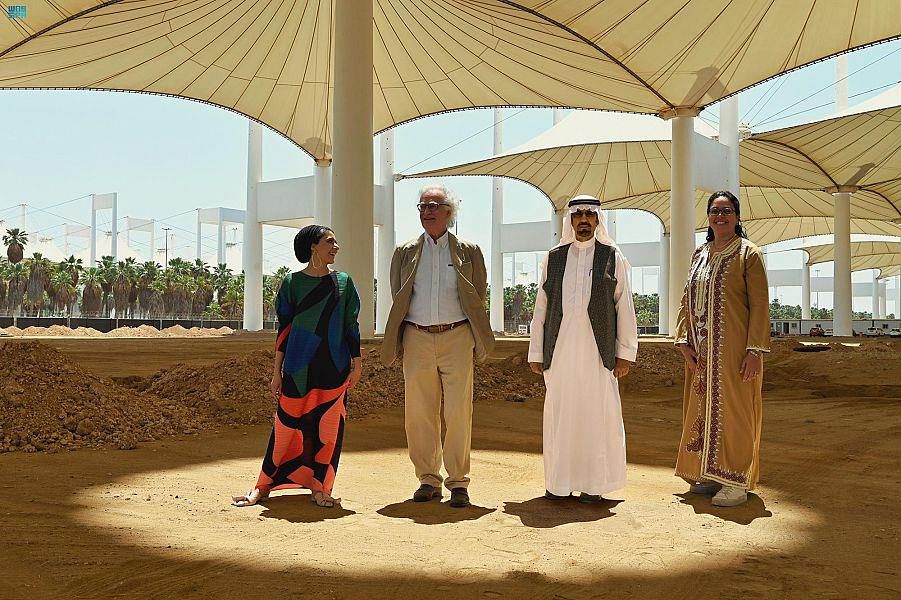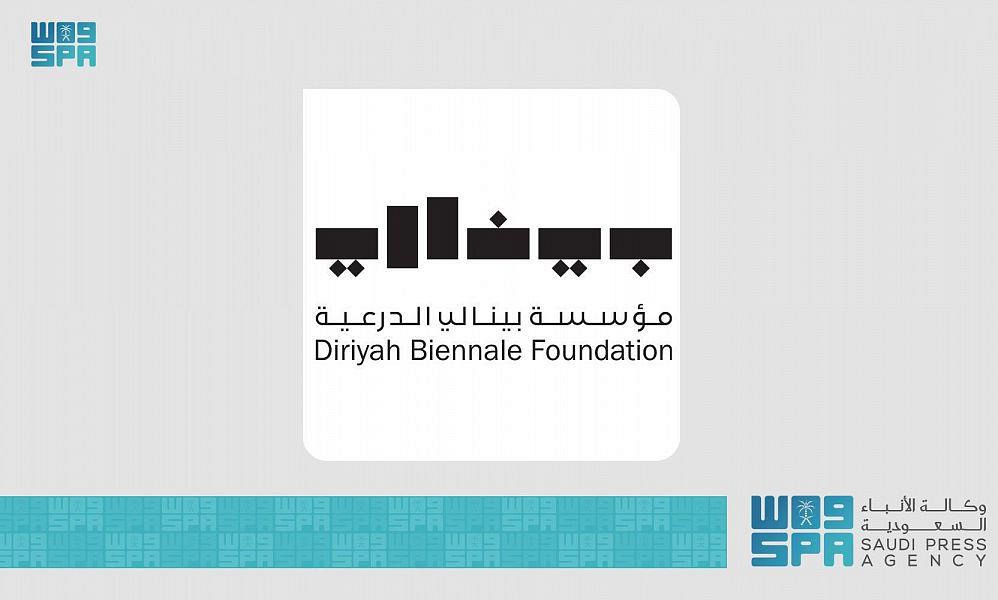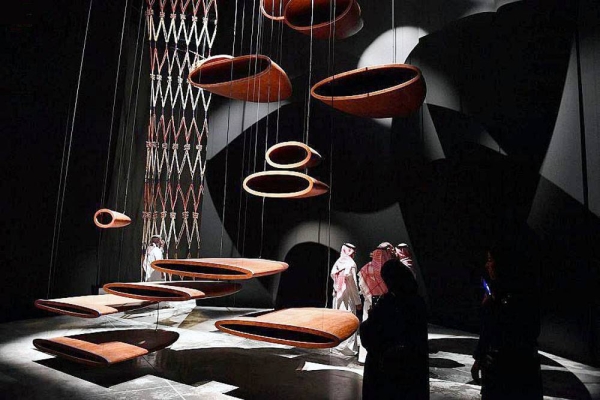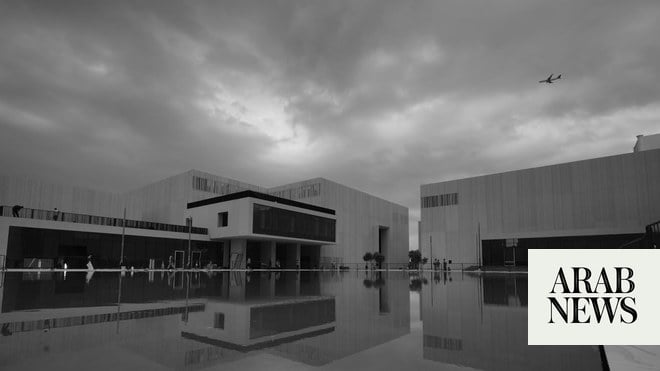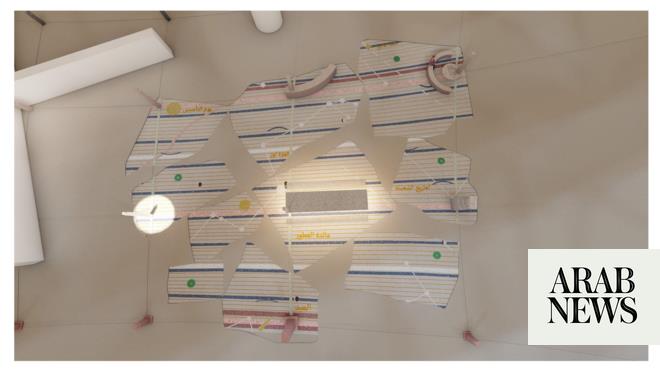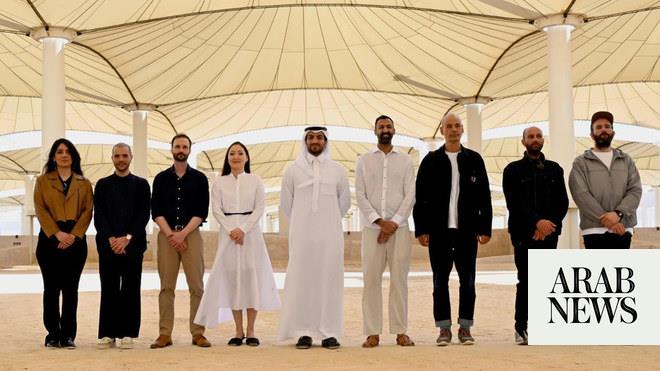
Established in 2020 by the Ministry of Culture, the Diriyah Biennale Foundation (DBF) will host a biennale every year, alternating between the Contemporary Art Biennale to be held in Diriyah and the Islamic Arts Biennale to be held in Jeddah.
The DBF launched Saudi Arabia’s first-ever art biennale, the Diriyah Contemporary Art Biennale, from December 2021 to March 2022 in the JAX district of Diriyah.
DBF announced the participating artists and highlighted the breadth of institutional loaned historical objects in the inaugural Islamic Arts Biennale to be held at the iconic Western Hajj Terminal at King Abdulaziz International Airport in Jeddah from Jan. 23 to April 23, 2023.
Led by a team of renowned curators Sumayya Vally, Dr. Julian Raby, Dr. Saad Alrashid and Dr. Omniya Abdel Barr under the theme of Awwal Bait (translated as First House), the Biennale invites visitors to embark on a multisensory journey.
The journey will be guided by a never seen before interplay of contemporary artwork commissions and important historical objects, expertly crafted together through scenography designed by the distinguished architectural studio OMA.
Commenting on this seminal moment in Saudi Arabia’s cultural history, Farida Alhusseini, Islamic Arts Biennale Director, said ‘With the inauguration of the Islamic Arts Biennale in Jeddah we look forward to the future of Islamic arts, while also reflecting on its rich and diverse past.
“By bridging craftsmanship and academia with continuing practices of artistry and creativity we hope that this edition, and future editions to come, will create space for new perspectives to be voiced and unexpected connections to inspire and generate meaning.
“Reflecting on the centrality of the Kaaba to the lives of Muslims around the world and offering a multidisciplinary celebration of what it means to be a Muslim, both in the past and today, the theme of Awwal Bait unfolds across two complementary sections; Qiblah (Sacred Direction) intricately revealed throughout the galleries and Hijrah (Migration), which is embodied by the large-scale outdoor installations under the iconic Hajj Terminal canopy.
Contemplating on her creative direction of the Biennale, Vally said, “The selected artists have been chosen for their methods of practice — grounded in the embodied, the aural, collectivity, and the spiritual.
“Awwal Bait (First House) refers to the reverence and symbolic unity evoked by the Kaaba in Makkah, and underscores the importance of the geographic location of this biennale. At the same time, it reflects on the construction of "home" through our spiritual and cultural rituals in Islam; acts which both unite us and celebrate our diversity and cultural hybridity.
"I am honored to be working with an incredible constellation of artists, each of whom I believe will contribute meaningfully to this discourse of Islamic art. These artists reflect deeply on the generativity of our contexts and practices for the present and future.”
Dr. Raby said, “This exhibition looks at Makkah as the focal point for all Muslims — spiritually, physically and in the realms of imagination and memory. We have placed emphasis on allusive perceptions, not literal descriptions.
“This approach has been made possible because the Biennale provides an unparalleled platform for mingling historical objects and contemporary artistic commissions. This is an exhibition less on the manifold arts of Islam and more on the art of Islam — the art of being a Muslim.”
Bringing together past, present and future, the Biennale will provide a wonderful and unique opportunity to encounter and experience contemporary commissions brought together in dialogue with magnificent rich and diverse historical treasures across a breadth of time periods.
Loaned by some of the most prestigious and renowned local and international institutions spanning over four continents, visitors will have the chance to discover that the making of lavishly gilded manuscripts or the chiseling of intricately designed candlesticks, amongst many other crafts, are the result of years of experience perfected through chains of knowledge and a mix of traditional and modern skills.
The canopy will also host two separate pavilions presenting a multitude of an unprecedented display of delicately crafted historical objects originally housed in the Prophet’s Mosque in Madinah and in the Masjid Al-Haram in Makkah among contemporary artistic expressions inspired by these Holy Sites.
Dr. Alrashid revealed, “The inaugural Islamic Art Biennale is a celebration of Saudi Arabia’s rich heritage. For the first time, more than a dozen public and private institutions from the Kingdom will come together in one venue to showcase masterpieces from their collections.
“Many of these have never been publicly displayed. The works on show will include objects from the two holiest cities of Islam, Makkah and Madinah, allowing visitors to connect directly with the rituals of pilgrimage, the exhibition"s primary inspiration.”
Dr. Abdel Barr said, “We tried to understand the rituals of belonging to Makkah and Madinah and illustrate the diversities in Muslim cultures and exchanged experiences. Through a selection of historical artifacts against a contemporary dialogue, mutual meaning and the richness of the material cultures came to light.
“It was particularly exciting for me to discover the historic Saudi collections, as well as the large efforts made in Madinah to produce millions of copies of the Qur’an yearly, in Arabic and 74 other languages.
“Most importantly, I came to realize that the greatest achievement is not in the creation of these objects, but in the sincere act of gifting them to Al-Masjid Al-Haram and the Prophet’s Mosque with a selfless dedication to serve their visitors — I see this as a beautiful expression of worship.”
A new initiative — AlMadar (meaning ‘The Orbit’) — will also be launched as a satellite exhibition to the Islamic Arts Biennale by DBF.
Opening up doors to future collaborations and partnerships, institutions from across the world have been invited to showcase and exhibit, in a dedicated gallery space, the tangible and intangible traditions of Arts and Culture from the Islamic World whilst celebrating the exchange of ideas.
Participating artists, along with others to be revealed, are as follows: (listed alphabetically by surname): Igshaan Adams, Leen Ajlan, Reem Al Faisal, Adel Al Quraishi, Noura Al Sayeh, Sarah Alabdali, Rund Alarabi, Nora Alissa, Moath Alofi, Nasser Alsalem, Farah Behbahani, Sultan Bin Fahad, M"barek Bouhchichi, Sarah Brahim, Bricklab, Lubna Chowdhary, Civil Architecture, and DAL - Digital Arts Lab.
Abdelrahman Elshahed, Alia Farid, Basmah Felemban, Iheb Guermazi, Haroon Gunn-Salie, Ziad Jamaleddine / L.E.FT Architects, Hamedine Kane, Idris Khan, Yasmeen Lari, Huda Lutfi, Taus Makhacheva, Ahmed Mater, Haroon Mirza, Joseph Namy, Moataz Nasr, Beya Othmani, Yazid Oulab, Shahpour Pouyan, Kamruzamman Shadin, Wael Shawky, Dima Srouji, Studio Bound, SYN Architects, James Webb, Ayman Yossri-Daydban, Ayman Zedani are the other artists lsted.
The world’s first-ever Islamic Arts Biennale will be located under the canopy of the prestigious Western Hajj Terminal, which was designed by Skidmore, Owings & Merrill in 1981 and was the recipient of the 1983 Aga Khan Award for Architecture.
There will also be a purpose-built 70,000 square meter venue with facilities to include exhibition spaces, a theater, a mosque, workshops, and classrooms dedicated to programming, as well as retail and dining.
This new venue made possible through cooperation between the Ministry of Culture and relevant entities as a means to cement the Hajj Terminal’s position as a hub for celebrating Islamic arts and culture. — SPA




